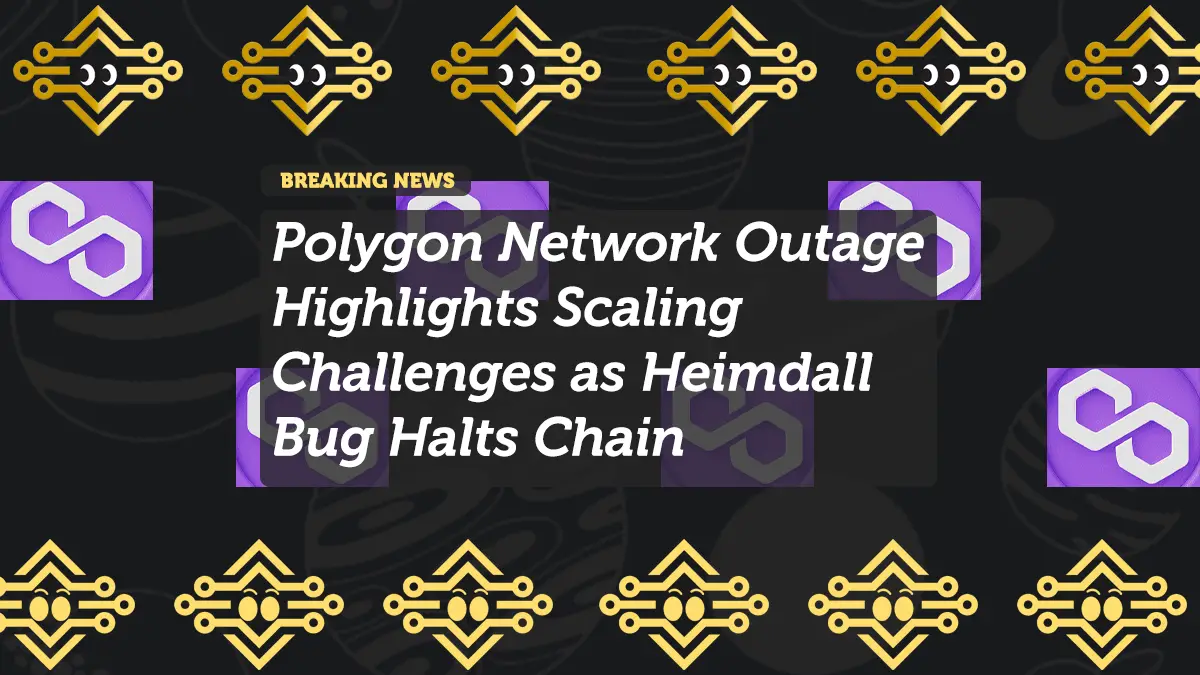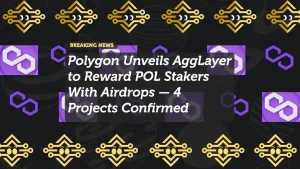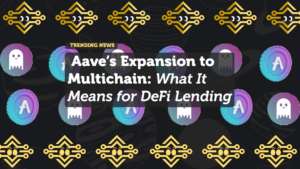
Polygon Network Outage Highlights Scaling Challenges as Heimdall Bug Halts Chain
The Polygon network outage lasted approximately one hour on July 30, 2025, when a validator exit triggered an unexpected bug in the Heimdall consensus layer. According to the Polygon Foundation, the disruption began shortly before 10:00 am ET and was resolved by 11:01 am ET.
This incident comes just three weeks after Polygon implemented its “most technically complex” hard fork since 2020—a July 10 upgrade to Heimdall that migrated the system to CometBFT and Cosmos SDK v0.50. The update aimed to reduce finality times and improve scalability across the network.
Technical Details of the Heimdall Failure
The Polygon network outage specifically affected the Heimdall layer, which serves critical functions:
- Validator management and consensus
- Finality checkpointing to Ethereum mainnet
- Cross-chain communication infrastructure
- Bridge security mechanisms
Importantly, the Bor layer—which produces blocks and processes transactions—remained fully operational throughout the incident. As the Polygon Foundation clarified: “Bor remained fully operational throughout, continuing to produce blocks without interruption.”
The root cause was a validator exit that triggered an unanticipated bug in the newly upgraded Heimdall system. Developers quickly deployed a patch to restore normal operations, but RPC providers continued experiencing issues that affected user access to applications.
Impact on Users and Applications
While the core network remained functional, the Polygon network outage created significant disruption:
- Polymarket, the largest blockchain-based prediction market (primarily housed on Polygon), displayed error warnings
- RPC providers experienced extended downtime, preventing user access to dApps
- Several DeFi protocols reported temporary transaction processing delays
- TVL metrics briefly showed anomalies across tracking platforms
The Polygon Foundation acknowledged these issues: “To be clear: the Polygon PoS chain has remained live, but due to RPC issues, users may experience disruptions accessing various apps.”
Context: Polygon’s Scaling Ambitions and Challenges
This incident occurs during a critical period for Polygon as it faces growing competition in the Ethereum Layer 2 space:
- TVL Position: Polygon currently holds $1.1 billion in total value locked, placing it outside the top 5 L2s
- Market Share: Once dominant, Polygon has lost significant ground to zk-rollups like Arbitrum and zkSync
- Technical Evolution: The network is transitioning from its PoS chain to Polygon 2.0 with zkEVM integration
- Recent Developments: The Heimdall v2 update was part of this broader scaling strategy
The timing of this outage—just weeks after the complex hard fork—raises questions about the stability of major protocol upgrades during competitive market conditions.
Comparison with Previous Outages
The Polygon network outage is not an isolated incident:
- March 2025: Polygon experienced a 45-minute outage due to consensus issues
- November 2024: A bridge vulnerability required emergency intervention
- August 2023: Network congestion during peak activity caused extended delays
This pattern suggests systemic challenges in maintaining reliability while scaling. The recent incident is particularly concerning given it followed a major upgrade intended to improve performance and stability.
Broader Industry Context
Polygon is not alone in facing technical challenges:
- Hyperliquid: Suffered an API outage on July 29 due to “spike in traffic”
- Solana: Experienced three outages in June 2025 during peak activity
- Arbitrum: Addressed several consensus bugs following its Nitro upgrade
As blockchain networks push performance boundaries, temporary disruptions have become an industry-wide challenge. However, frequency and duration of outages remain critical metrics for institutional adoption.
Market Reaction and Future Implications
The market reacted modestly to the Polygon network outage:
- POL token declined 1.11% to $0.22 during the incident
- Trading volume increased 22% as users monitored the situation
- Social media sentiment turned cautiously negative among technical users
More significantly, the incident raises questions about:
- The stability of major protocol upgrades during competitive market conditions
- Whether traditional PoS chains can compete with newer zk-rollup architectures
- How outages affect institutional confidence in Layer 2 solutions
- The timeline for Polygon’s transition to its zkEVM-based future
Final Thoughts: Scaling Reliability as a Competitive Factor
The Polygon network outage highlights a critical reality for Ethereum scaling solutions: as the market matures, reliability becomes as important as raw performance metrics. While brief outages may be acceptable during experimental phases, institutional adoption requires near-perfect uptime.
For Polygon specifically, this incident arrives at a pivotal moment as the network transitions from its current PoS architecture toward the more advanced Polygon 2.0 vision. The project’s ability to maintain stability during this transition will significantly impact its competitive position in the increasingly crowded Layer 2 landscape.
As the Ethereum ecosystem evolves, network reliability will become a key differentiator—potentially shifting market share toward solutions that balance innovation with operational excellence.
















